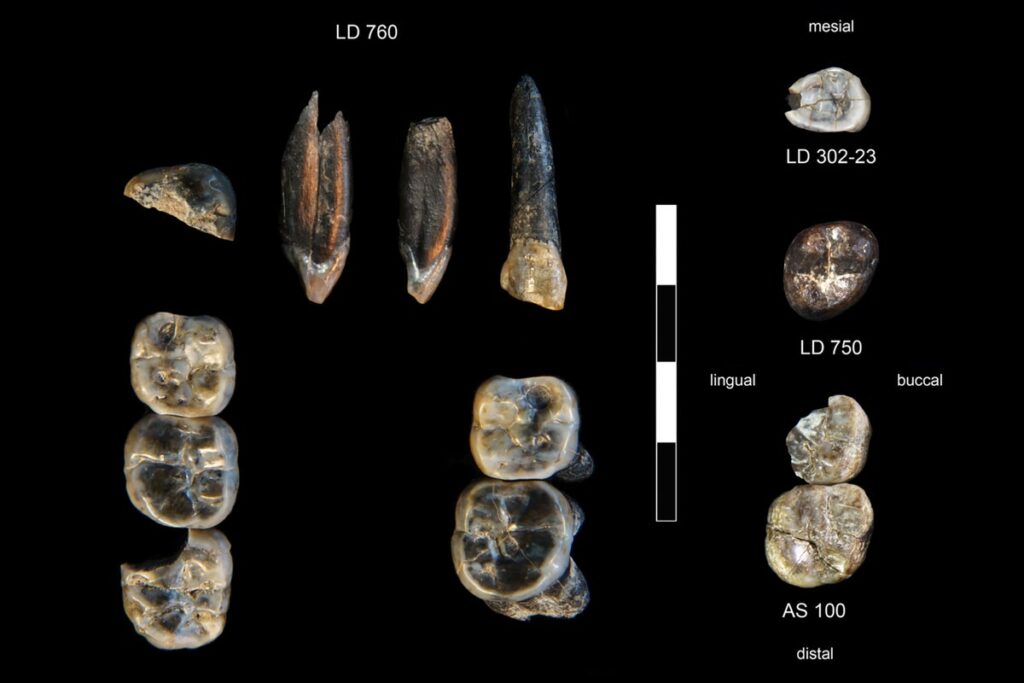August 13, 2025
2 min read
Entirely New Species of Human Ancestor Discovered
Ancient teeth found in Ethiopia belong to a never-before-seen species in the Australopithecus genus of human ancestors
Thirteen fossilized teeth were collected in the Ledi-Geraru Research Area from 2015 to 2018. The collections at LD 750 and LD 760 localities represent a newly discovered species of Australopithecus. LD 302 and AS 100 represent early Homo already known from the LD 350 mandible discovered in 2013.
Brian Villmoare/University of Nevada, Las Vegas
Researchers working in northeastern Ethiopia have discovered remains of a previously unknown branch of humanity. The fossils, which include teeth that date to between 2.8 million and 2.6 million years ago, belong to a never-before-seen member of the genus Australopithecus—the same genus to which the famous Lucy fossil belongs. They show that this newly identified member of the human family lived alongside early representatives of our own genus, Homo. The findings were published in Nature on August 13.
The discovery team, led by investigators at Arizona State University, has yet to name the new species because the researchers need more fossils from other parts of the body to do so. But comparisons of the teeth with other fossils from the same site—Ledi-Geraru in the Afar Region of Ethiopia—as well as with other hominin fossils, revealed that they are distinctive enough to represent a species of Australopithecus that is new to science.

The Ledi-Geraru paleontological team searches for fossils in the Lee Adoyta Basin in Ethiopia, where the genera Homo and Australopithecus have been recovered.
Kaye Reed/Arizona State University
On supporting science journalism
If you’re enjoying this article, consider supporting our award-winning journalism by subscribing. By purchasing a subscription you are helping to ensure the future of impactful stories about the discoveries and ideas shaping our world today.
Together with previous finds, the new fossils demonstrate that at least four lineages of hominins (creatures more closely related to us than to our closest living relatives, the chimpanzees and bonobos) lived in eastern Africa between three million and 2.5 million years ago.
How these hominins were able to share the landscape is a question the team is working to answer. One possible explanation is that they preferred different foods. Studies of the enamel of their fossilized teeth may yield clues to what they were eating.
Once upon a time, scholars thought that human evolution was a march of progress in which our forebears evolved in linear fashion from an apelike ancestor to a series of increasingly humanlike forms. The new find underscores the complexity of human origins. Although Homo sapiens is the only hominin species on Earth today, for the vast majority of humanity’s existence, multiple hominin species shared the planet. Our family tree is more like a bush, with lots of twigs that were dead ends—failed evolutionary experiments that occurred outside of our direct line of ancestry.

